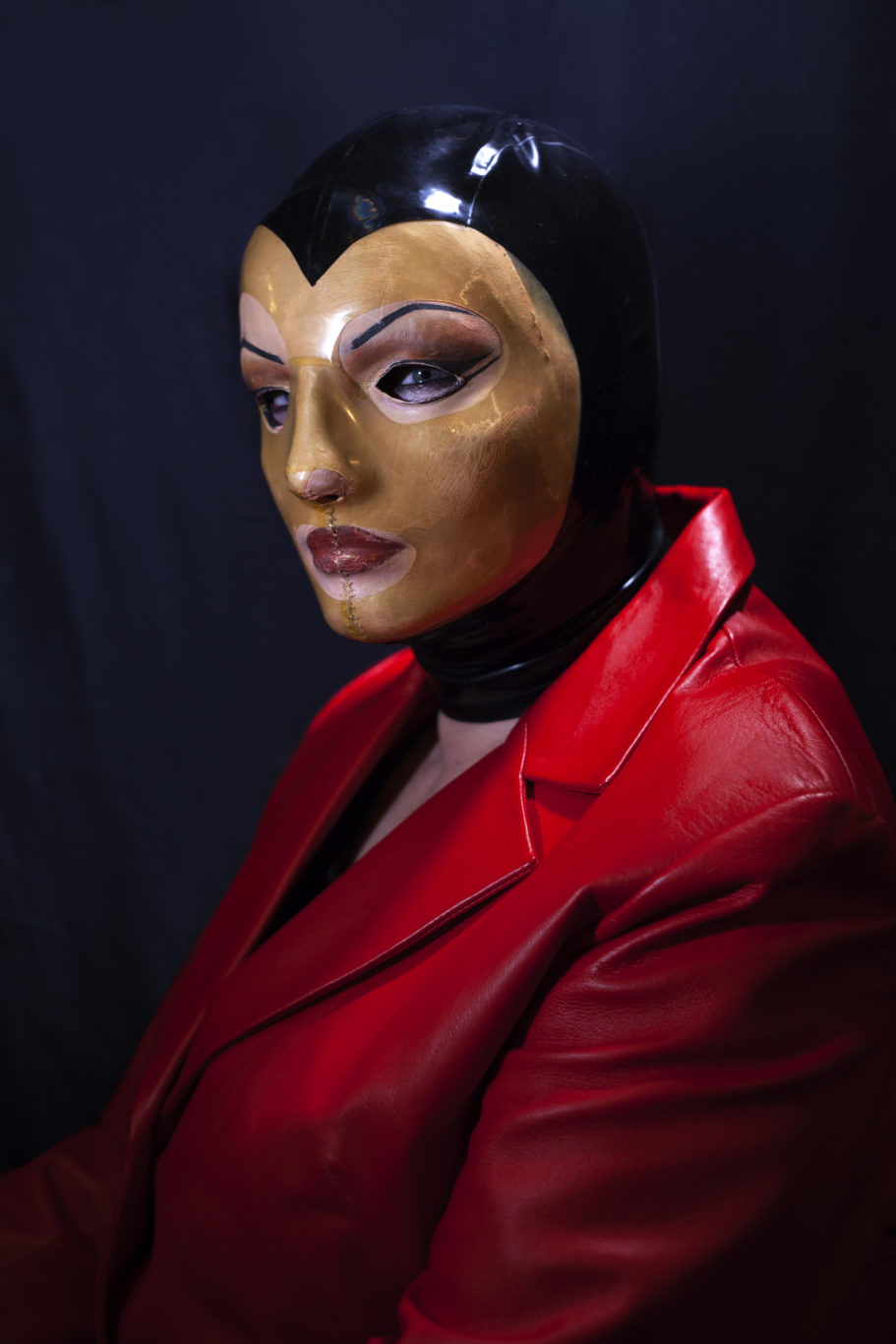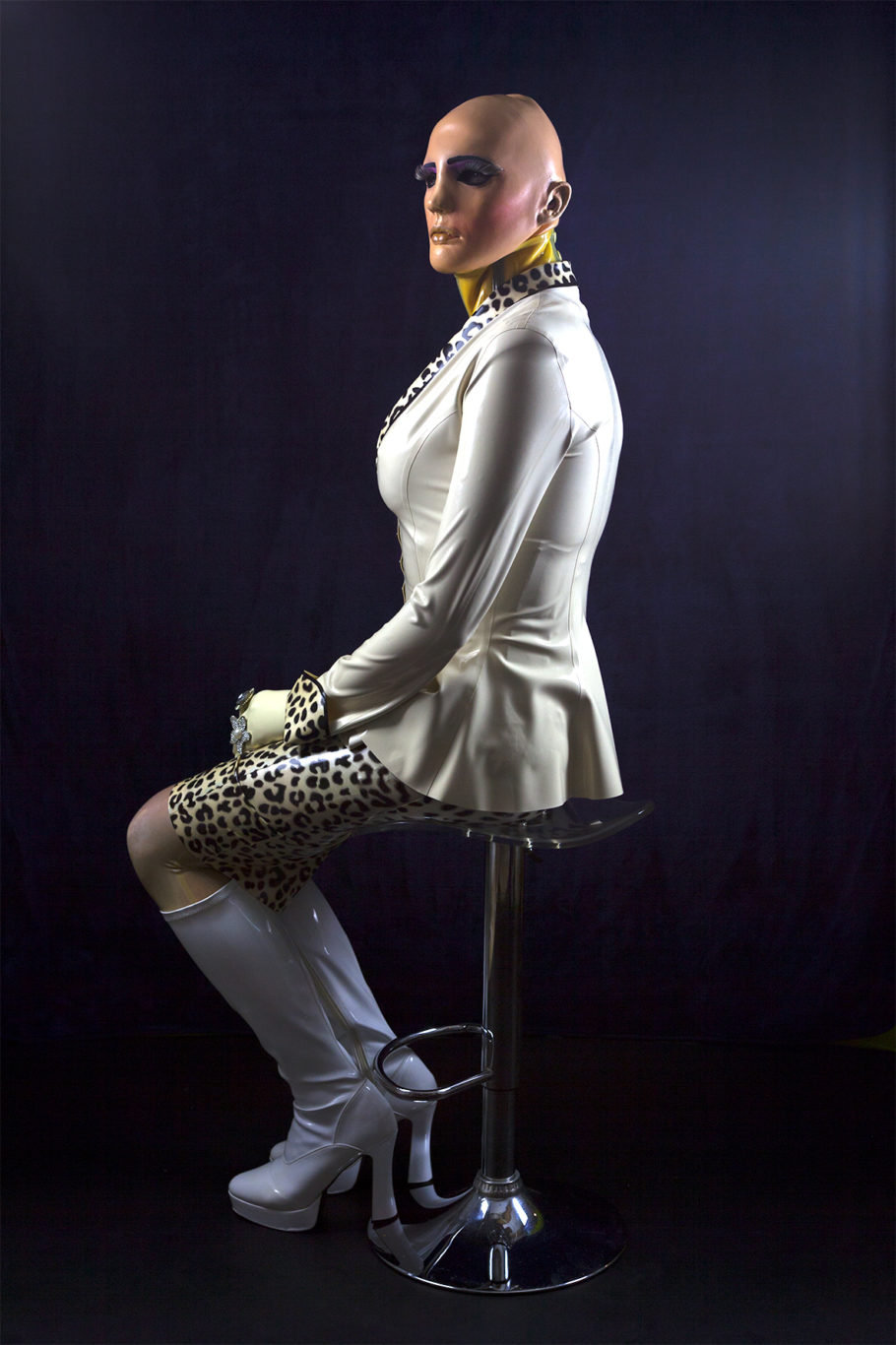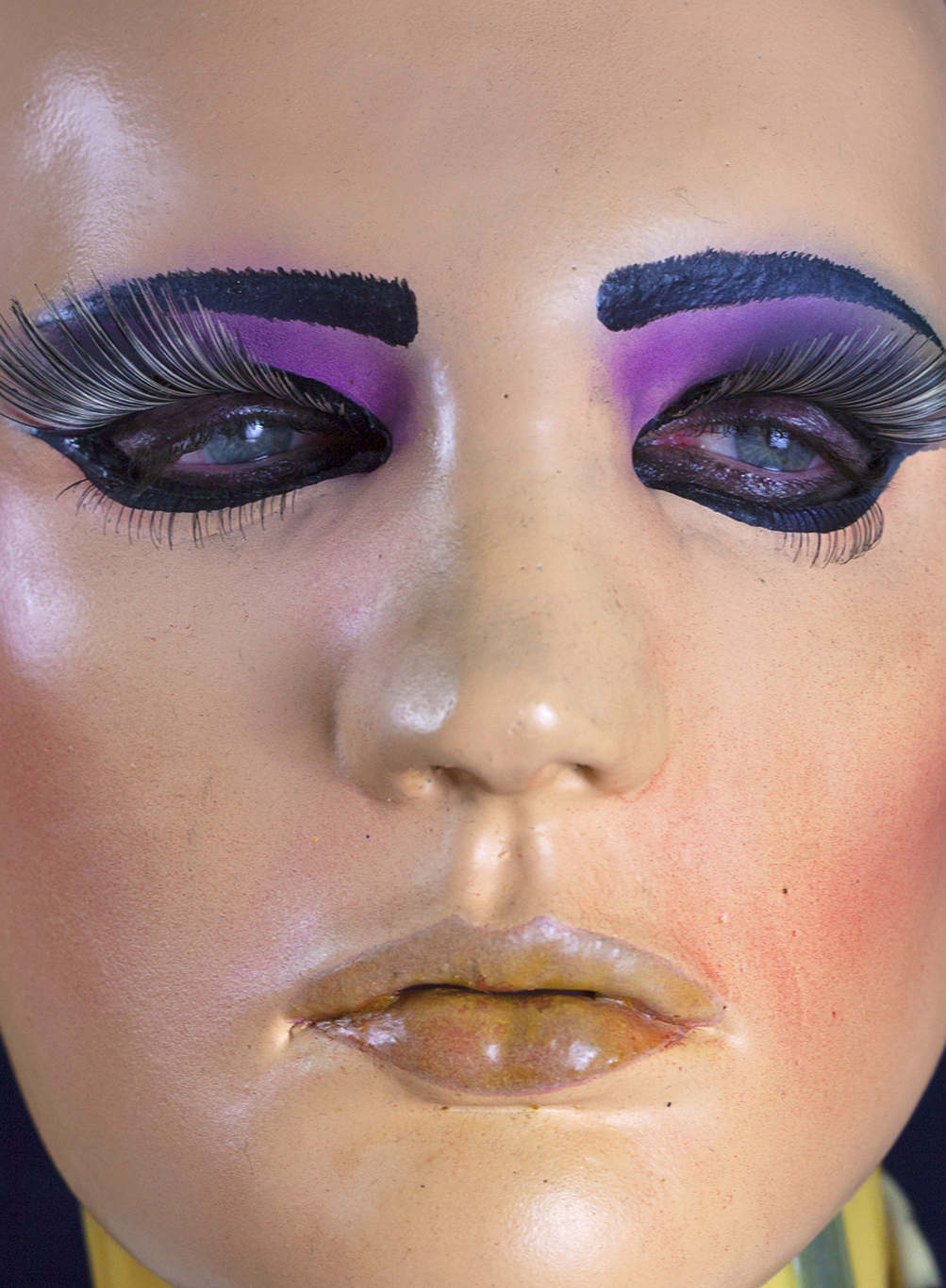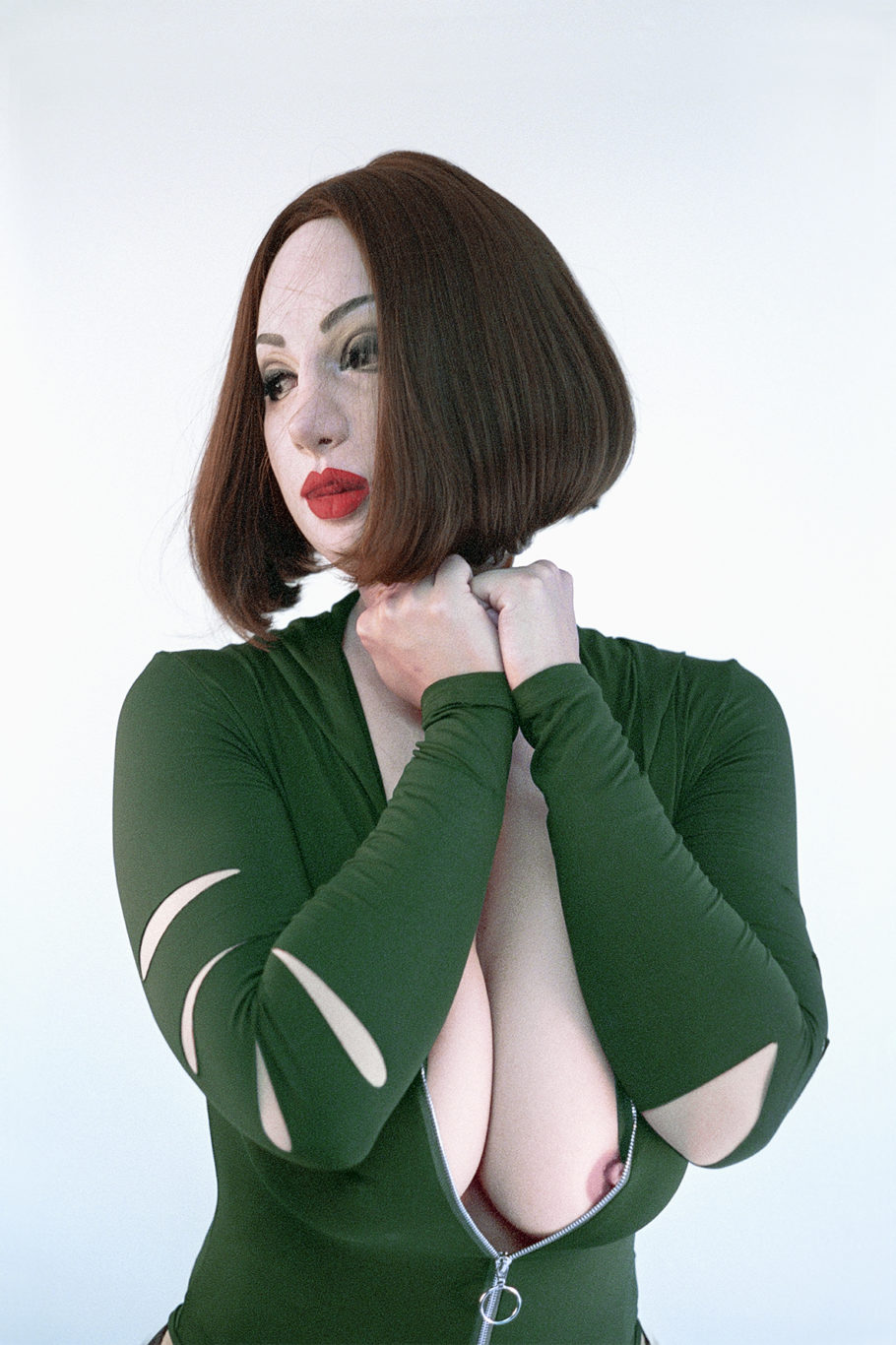Fetish of the Image
My first thought was „Second Skin”, and the exhibited performativity of the portrayed. The normally intimate process in portrait photography seems at first to be removed by the material of the second skin, but at the same time it is brought back again by the fact that the process of masking itself is a very intimate process. The photographs generate an intensive pre-occupation with questions of identity, with possibilities of identity change through completely analogous means of masking in times of Second Life, VR and AR. The proximity of these works to theatre, performance and live art aesthetics interests me, as well as their social background.
curatorial text by Carena Schlewitt accompanying the „Fetish of the Image” exhibition, HELLERAU European Center for Contemporary Arts, Dresden, DE 20.03–20.04.2019

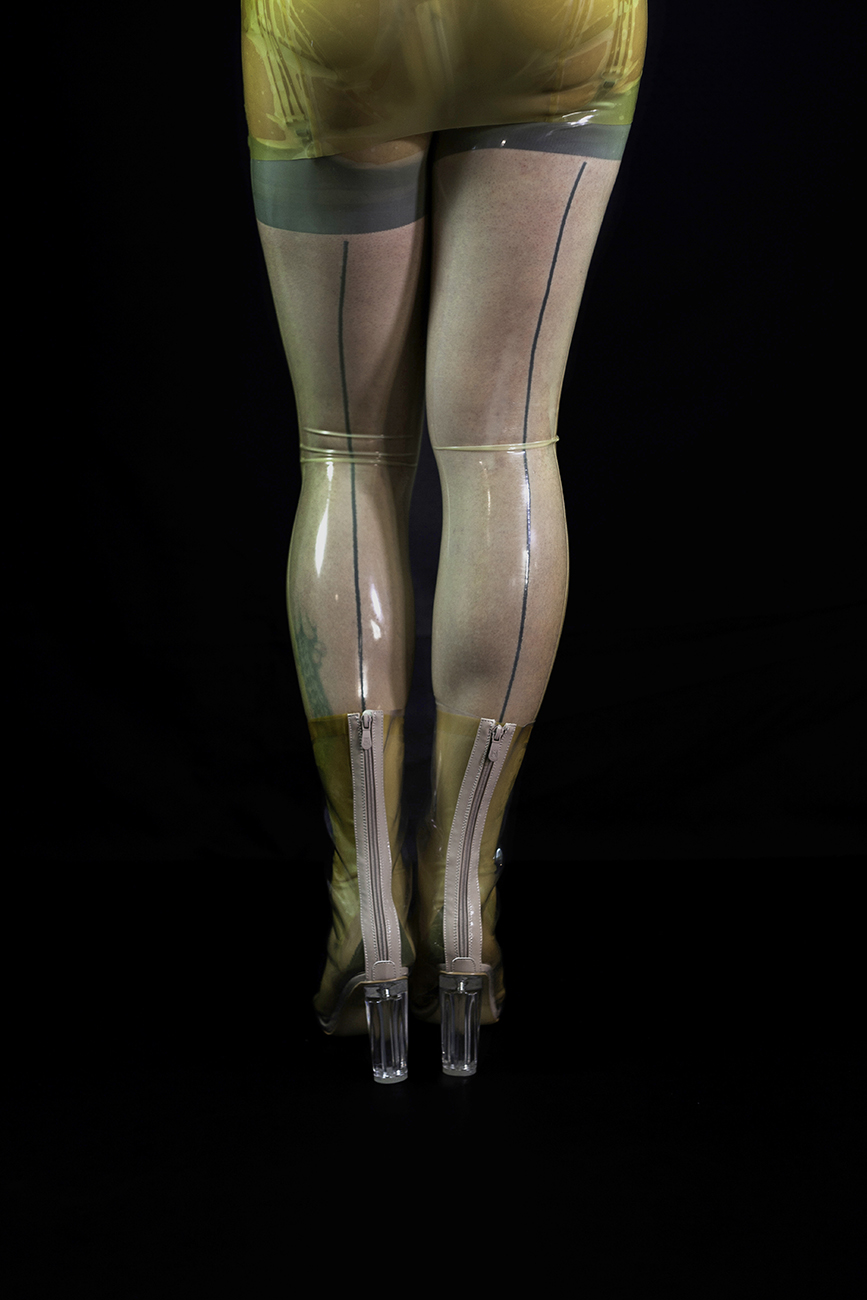



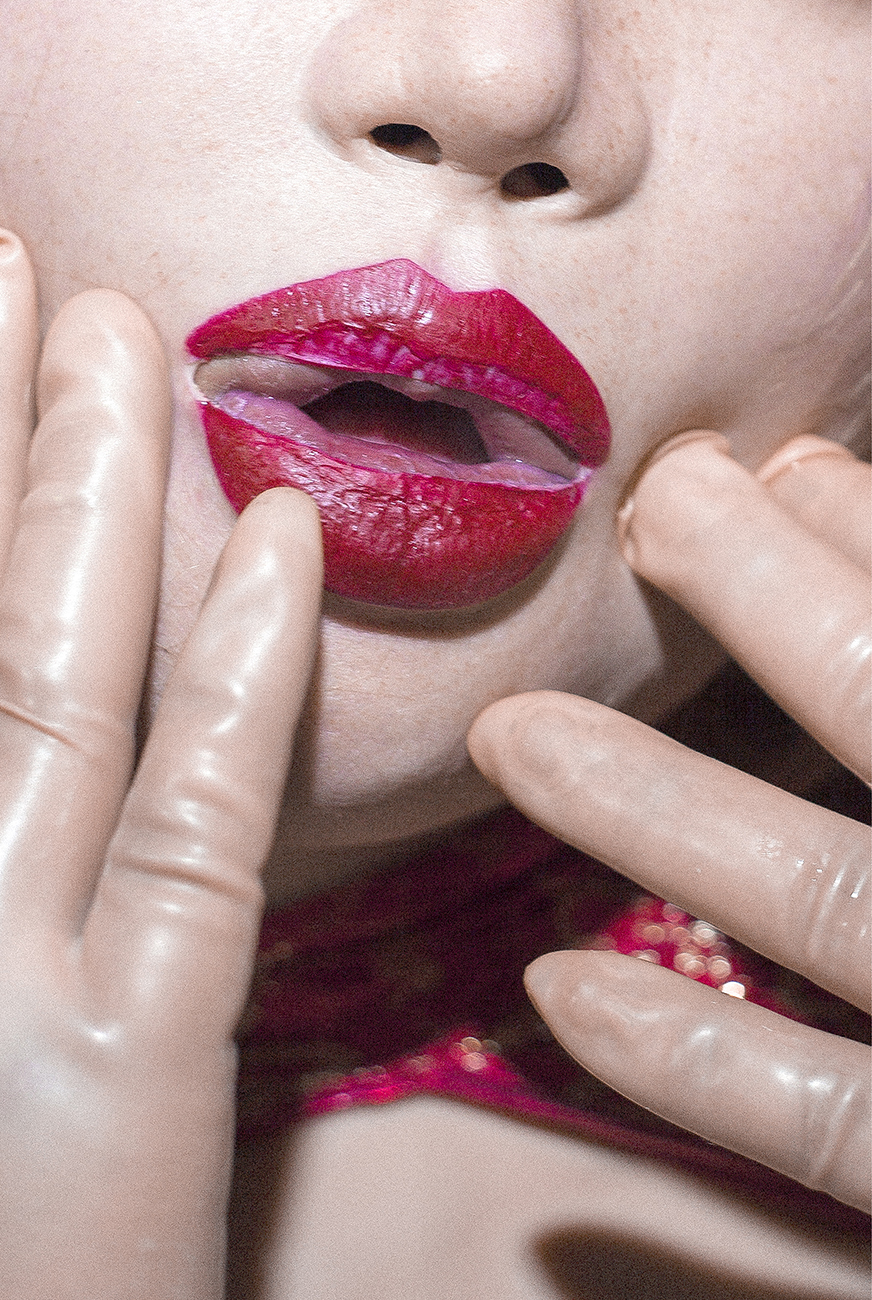
The images document the intimate moments of transition that happens in strict privacy and secrecy among a hermetic, yet popular worldwide Female Masking fetish subculture. Using realistic silicone costumes that imitate female bodies and faces, Maskers transform themselves into life-like females. Contrary to Drag that entered pop culture as performative practice and thus has been gaining visibility, Masking is widely considered taboo, including by other fetish communities.
Maskers rarely appear in public – disguise takes place in private spaces and the community connects online to share and comment on images and videos of themselves.
Less than sexual endeavours, the idea of gender as fluent, performative and free concept motivates Masking practice. The disguise is a way for simulating a temporary transition between male and female body.
Under the female second skins, Maskers are frequently white, wealthy men who belong to a social upper class. Although their queer desires are commonly tabooed, they were accepted as a source of revenue. The industry producing female masks emerged specially to fulfil Maskers’ needs. Silicone costumes are produced and sold as costly commodities that not everyone can easily afford.
As a young, middle-class woman, not much connects me with the Masked men. Fundamentally, my experience comes from living as a woman while for Maskers, it derives from performing femininity. The only access to and connection with my models was photography. While posing, the men permitted me to look deeper underneath the silicone costumes.
For Maskers, submitting their bodies to heaviness of the cumbersome, suffocating female costumes is a liberating and empowering experience. This inflicted in capitalist exchange and ambivalent relationship between submission and emancipation not only inscribes itself in a fetishist play, but draws out the ambivalent aspect of performing womanhood in the present.
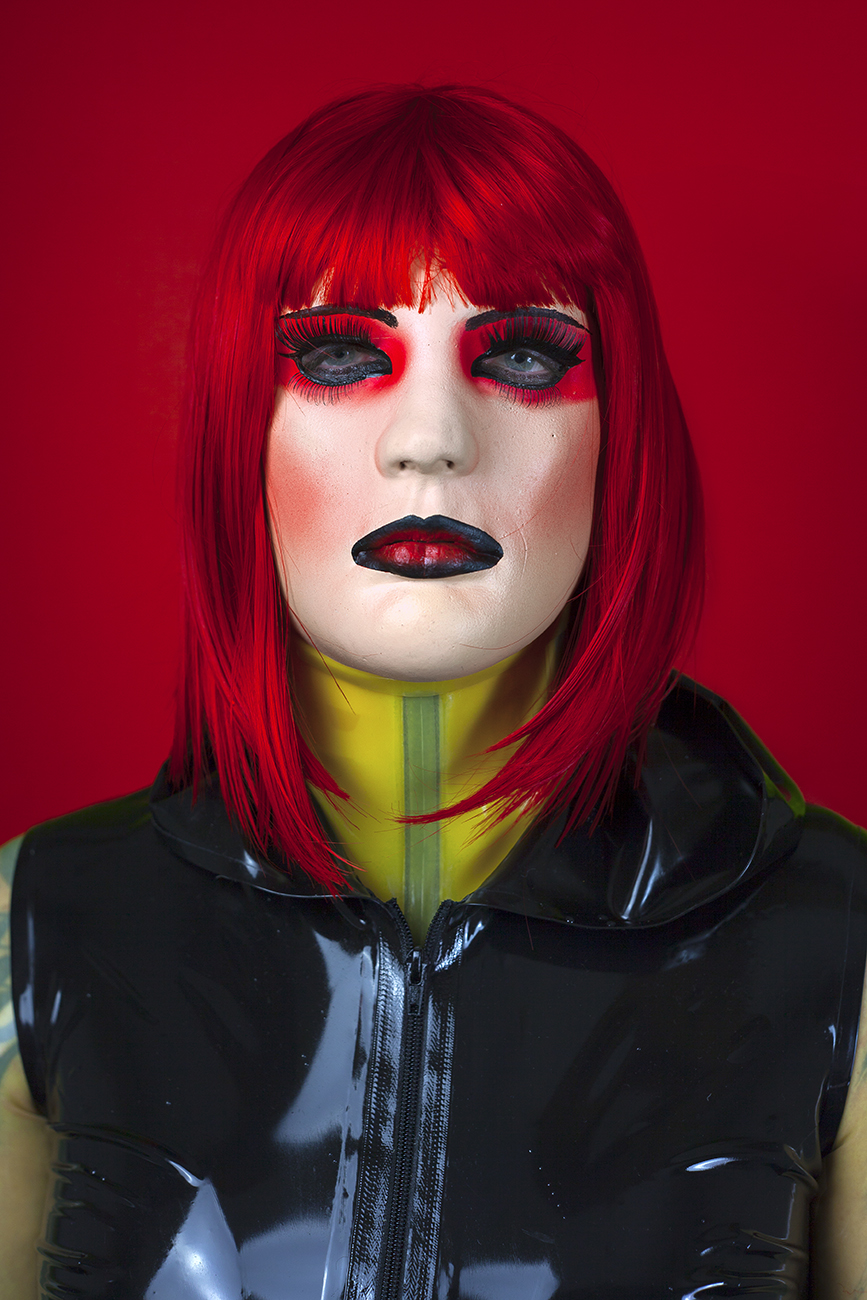
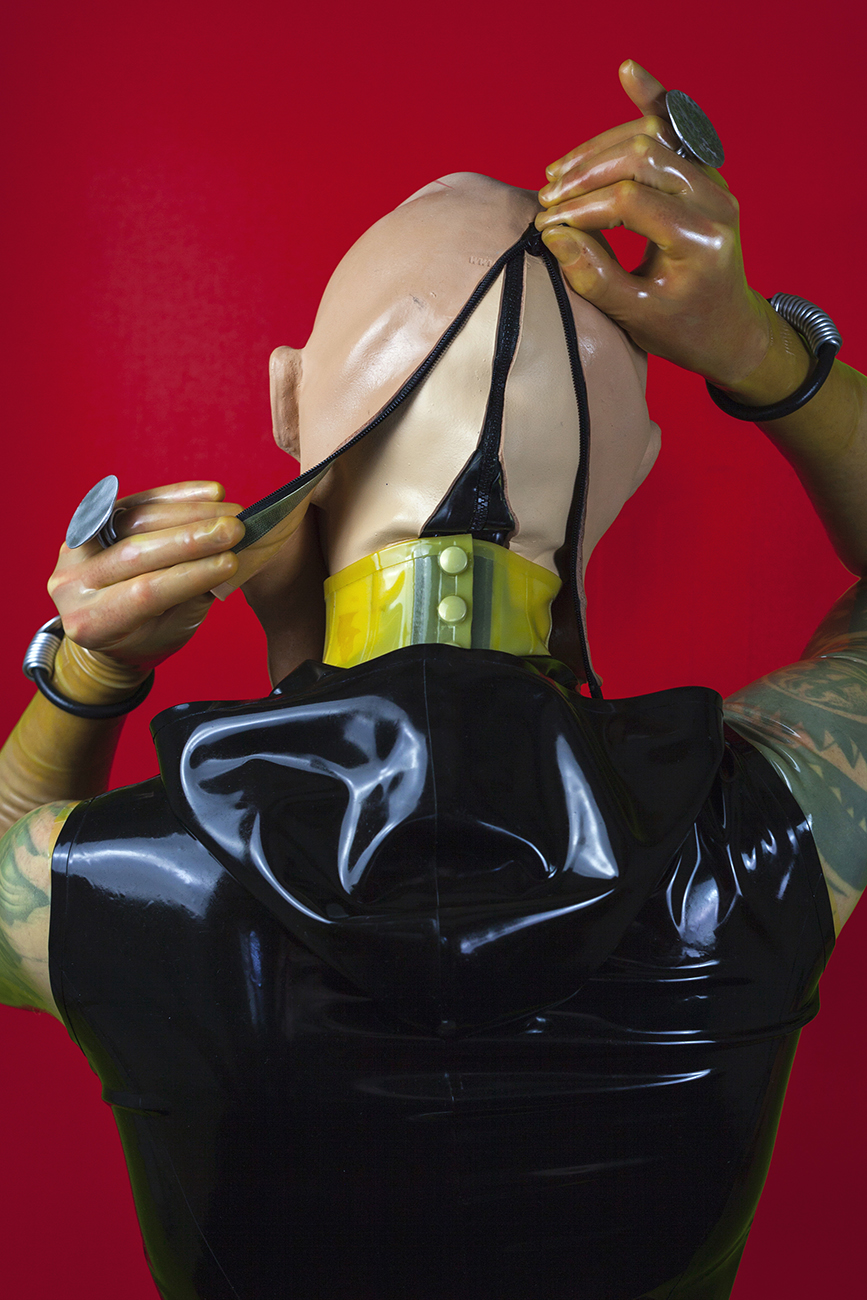

Make-up and beauty endeavors from the queer circles influence the straight aesthetics. Because can you imagine someone more camp and eccentric looking, than the embodiment of the perfect heterosexual femaleness, Kim Kardashian? It must be then something about the surplus, the excess, too-muchness in the masking practice, for what people consciously choose this excess and playing with it. We are coming back to the question of theatre. In many theatrical traditions, women were not allowed to perform (in Japanese kabuki and Elizabethan theatre alike), what not only caused men to take the female roles, but also laid grounds for a specific drag culture, putting an institutional seal over a situation where it is a man, who is the expert on how to perform the most seductive, attractive kind of femininity.
text by Agata Pyzik
